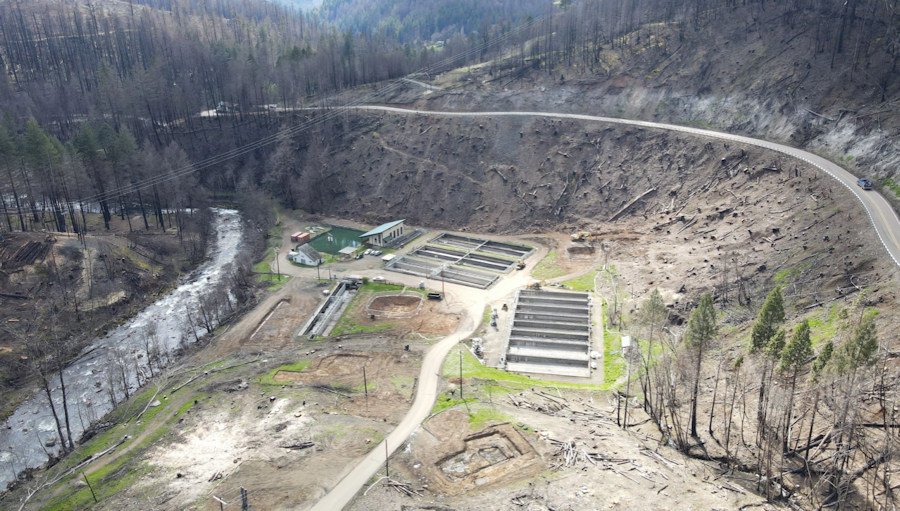Oregon hires independent arborist to review disputed hazard tree removal efforts

SALEM, Ore. (KTVZ) – A Pacific Northwest arborist with more than 30 years of experience in forestry and hazard tree analysis has been hired as an independent contractor to work directly with the Debris Management Task Force to review the hazard tree effort underway following the devastating 2020 wildfires, the Oregon Office of Emergency Management said Monday.
The move comes amid criticism from environmental groups and whistleblowers that overly aggressive logging and mismanagement have led to the removal of many trees that don't pose a danger.
Here's the rest of the news release from the Office of Emergency Management:
Galen Wright, president of Washington Forestry Consultants, Inc., is tasked with providing a full assessment of the program, including any potential recommendations, by early June. His evaluation will include a review of the FEMA-required criteria being used to mark trees and the skills and qualifications of arborists and foresters in the field. Additionally, Wright will provide on-the-ground support for the current three-step evaluation process used to determine which fire-damaged trees pose safety threats in Oregon’s busiest state highway corridors and other public areas.
“This effort is the critical first step of many on the long road to recovery,” said Mac Lynde with ODOT and the director of the three-agency Debris Management Task Force. “We were honored to be asked to perform this work and take pride in helping Oregon families and communities recover and ultimately rebuild. As this adaptive and evolving emergency response operation continues to make significant progress, Oregonians deserve to have confidence in the good work underway.”
“Because the scope and scale of this effort is unlike anything Oregon has seen before, Wright will provide additional subject matter expertise, share helpful perspectives, and add an extra level of quality control moving forward. While we work to ensure no more lives are lost to the 2020 wildfires, we will continue to incorporate feedback from a range of partners to make sure this work is done right,” said Lynde.
To do this, ODOT and the task force continue to adapt hazard tree operations to reflect public feedback and resolve challenges that inevitably arise in the field. In addition to Wright’s independent review, staff and crews will continue ongoing internal program appraisals and work with the Secretary of State’s office as part of its annual audit plan.
Additional checks-and-balances are in place to ensure fire-damaged tree evaluations and markings are thorough and accurate. Tree markers are paid hourly, rather than by the tree, to create a clear separation of duties. Tree cutters are liable for a $2,000 fine for each unmarked tree that is cut. ODOT incident commanders, a monitoring firm acting as operation inspectors, a disaster consulting firm with expertise in FEMA-reimbursement procedures, and the Army Corps of Engineers all monitor field operations daily.
“The extent and magnitude of damage to these landscapes is heartbreaking,” said Lynde. “As Oregonians, we empathize with the understandably emotional reactions and often traumatizing experience of reliving these wildfires upon seeing this loss to the natural landscape. Our objective remains to remove only dead or dying fire-damaged trees posing a threat to human life and safety and for those trying to rebuild. We accept and welcome all feedback to help inform these efforts and will continue to investigate and take swift and corrective action in response to any reports of mismanagement for the duration of this work.”
The 2020 September wildfires go down in history as one of Oregon’s most devastating disasters, burning more than one million acres across Oregon, destroying thousands of homes, and claiming the lives of nine Oregonians. As the smoke settled and cleared, communities were confronted by devastation and loss, with swaths of dead burned trees blocking roads, toppling across highways, and interfering with cleanup efforts. For Oregon to receive federal reimbursement as part of an emergency response operation, the Wildfire Economic Recovery Council charged the task force to immediately start work removing debris from nearly 3,000 damaged home sites and the hazardous dead or dying trees surrounding these areas.
To accomplish this unprecedented effort, teams of certified arborists, professional foresters, field technicians, and environmental consultants worked together with state and federal land managers and environmental regulators to draft an Environmental Protection Plan and criteria for how to evaluate each tree to determine threat levels.
State crews and independent contractors are not the only ones performing recovery work. Many groups, local governments, and companies are also working simultaneously in these areas. While state-led work is happening only along state highways and near fire-impacted home sites, local and county crews are cleaning up roads; utility companies are working near power lines and other easements; public land managers are removing trees on state and federal land; private property and timberland owners are managing their forestlands and performing restoration and fire-resiliency work; and nonprofit groups and volunteers are working with property owners and watershed councils to plant trees and other vegetation.
“We recognize and mourn the lasting imprint these fires have left on Oregon as we all work together to recover and rebuild,” said Lynde. “We encourage anyone with a question or concern about any aspect of this work to call our hotline at 503-934-1700 so that we can help and find solutions together.”
Currently, more than half (78,000) of the total estimated 140,000 fire-damaged trees have been assessed and nearly a quarter (35,000) have been cut or removed. Because hazard trees, once cut or felled, belong to the landowner—and not ODOT or the task force—no revenue has been generated from this operation. However, some trees have been donated to local conservation and habitat projects.
Watch:
- How this critical recovery work is helping Detroit rebuild and write its next chapter
- How removing hazard trees helped the McKenzie School District reopen its doors in March
- ODOT and the Debris Management Task Force have cleared more than half of the damaged home sites participating in the state program to date
- More about the certified arborists and crews working to assess and remove dead or dying trees near state highways and recovering communities
For more information:
- Debris and tree hotline for all questions and comments: 503-934-1700
- For the latest news and debris/tree-related content: www.debriscleanupnews.com
- To track the latest status, progress and dashboard: https://bit.ly/33KeYS9
- For FAQs and other property-related information: https://wildfire.oregon.gov/cleanup



